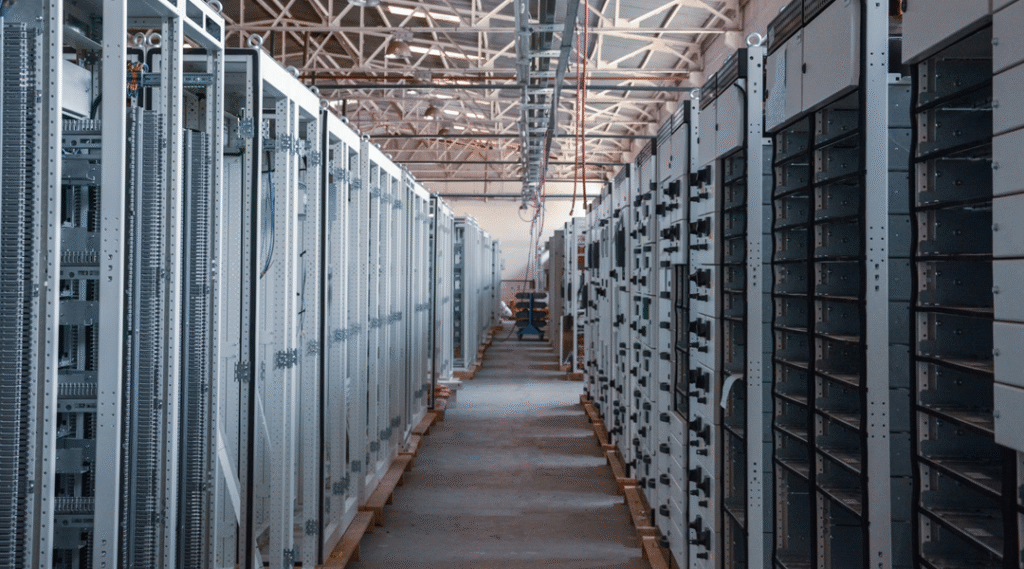As global demand for digital services accelerates, data centers are evolving from static warehouses of servers into dynamic, intelligent, and eco‑conscious hubs. Looking ahead, three transformative trends—quantum computing readiness, AI‑native design, and carbon‑neutral objectives—will redefine how data centers are built, managed, and integrated into broader digital ecosystems. By examining these emerging innovations, stakeholders can prepare for a future in which agility, intelligence, and sustainability are paramount.
1. Quantum Computing Readiness
While classical high‑performance computing (HPC) will continue to dominate near‑term workloads, visionary data center operators are laying groundwork for quantum processors. Unlike binary transistors, quantum bits (qubits) can exist in superposition, enabling certain complex computations—cryptography, molecular modeling, optimization—to be performed exponentially faster. To accommodate quantum hardware, data centers must address specialized requirements:
- Cryogenic Cooling Infrastructure. Most superconducting qubits operate at millikelvin temperatures. Facilities will need on‑site dilution refrigerators, vacuum systems, and vibration‑isolation platforms integrated alongside conventional racks.
- Electromagnetic Shielding. Qubits are highly susceptible to electromagnetic interference. Faraday cages and low‑noise power supplies will become essential in “quantum zones.”
- Hybrid Control Systems. Quantum processors require classical controllers for error correction, calibration, and orchestration. Future data centers will host co‑located classical clusters with ultra‑low latency interconnects (e.g., photonic links) bridging to quantum modules.
By building out modular “quantum readiness” pods today, operators can phase in emerging hardware generations without costly retrofits, ensuring data centers remain at the frontier of computational capability.
2. AI‑Native Design
Artificial intelligence is not just another workload—it is reshaping how data centers themselves are designed and operated. AI‑native data centers integrate machine learning at every layer: from rack‑level cooling optimization to predictive maintenance and workload scheduling. Key elements include:
- Dynamic Thermal Management. AI models continuously ingest sensor data (temperature, humidity, airflow) to adjust cooling units, fan speeds, and air‑flow pathways in real time, reducing Power Usage Effectiveness (PUE) by 5–10%.
- Predictive Maintenance and Anomaly Detection. Leveraging historical operational logs, AI systems forecast equipment failures (e.g., power supply degradation, bearing wear) weeks before they occur, triggering automated maintenance workflows and minimizing unplanned downtime.
- Autonomous Workload Orchestration. AI schedulers balance compute and storage tasks across heterogeneous resources—GPUs, FPGAs, traditional CPUs, and even edge micro‑data centers—optimizing for energy cost, latency, and performance Service Level Agreements (SLAs).
By embedding AI at the core, data centers become self‑optimizing entities that adapt to shifting demands, lower operational costs, and improve reliability—transforming facilities into digital brains rather than bricks and mortar.
3. Carbon‑Neutral Ambitions
Sustainability has shifted from a marketing tagline to a strategic imperative. Major cloud providers and colocation operators are committing to 2030 or 2040 carbon‑neutral targets, prompting new approaches to energy sourcing, efficiency, and emissions accounting:
- Renewable Energy Integration. On‑site solar arrays, wind turbines, and biogas generators are paired with virtual power purchase agreements (VPPAs) that fund off‑site solar and wind projects. This dual strategy helps operators match electricity consumption with renewables in real time.
- Energy Storage and Grid Services. Battery systems and thermal storage (e.g., ice‑based chillers) buffer supply intermittency and enable data centers to act as grid stabilizers, discharging stored energy during peak demand.
- Circular Economy Practices. Equipment lifecycle management emphasizes reuse, refurbishment, and responsible recycling. Water‑cooling loops, air‑side economizers, and immersion‑cooled modules are designed for minimal waste and easy material recovery at end‑of‑life.
- Scope 3 Emissions Tracking. Beyond direct onsite emissions (Scope 1) and purchased electricity (Scope 2), forward‑looking operators are quantifying indirect upstream impacts—semiconductor manufacturing, raw materials, logistics—and engaging partners to reduce the entire value‑chain footprint.
Successfully pursuing carbon‑neutrality not only meets regulatory and stakeholder demands but also unlocks cost savings, risk mitigation against fossil‑fuel price volatility, and new revenue streams through grid services.
4. Converging Trends and Strategic Implications
These three trends—quantum readiness, AI‑native architectures, and carbon‑neutral operations—are not isolated initiatives but interlocking dimensions of future‑proof design. For instance, AI‑driven cooling optimization reduces energy consumption, directly supporting carbon‑neutral goals. Likewise, classical compute clusters optimized by AI will form the control plane for quantum modules.
Strategic takeaways include:
- Modular, Phased Investments. Adopt a “pod” approach that allows incremental upgrades (quantum pods, AI‑OEE zones, renewable energy clusters) without full retrofits.
- Cross‑Functional Teams. Data center engineering now spans cryogenics, AI/ML devops, energy markets, and sustainability accounting. Breaking down silos accelerates innovation.
- Ecosystem Partnerships. Collaboration with quantum hardware vendors, AI software providers, utilities, and recycling firms is essential—no single operator can master all domains.
Final Thoughts
As digital services evolve, data centers must transform from passive power‑hogs into intelligent, sustainable platforms ready for the next wave of computing paradigms. By proactively developing quantum‑ready infrastructure, embracing AI‑native operations, and committing to carbon‑neutral practices, organizations will secure competitive advantage, operational resilience, and environmental stewardship—ensuring that the data centers of tomorrow are as forward‑looking as the applications they host.
All articles on this special edition-DATA CENTER:
(#1) Inside the Digital Backbone: Understanding Modern Data Centers
(#2) From Vacuum Tubes to Cloud Campuses: The Evolution of Data Center Architecture
(#3) From Servers to Coolant: A Deep Dive into Data Center Core Components
(#4) Harnessing Efficiency: Overcoming Energy and Sustainability Hurdles in Data Centers
(#5) Cooling Innovations Powering the Next Generation of Data Centers
(#6) Safeguarding the Core—Data Center Security in the Physical and Cyber Domains
(#7) Decentralizing the Cloud: The Rise of Edge Computing and Micro Data Centers
(#8) Data Center: Cloud, On-Premises, and Hybrid Infrastructure
(#9) Intelligent Data Center Management and Automation
(#10) Market Landscape and Key Players in the Data Center Industry
(#11) Navigating Regulatory, Compliance, and Data Sovereignty in Modern Data Centers
As for in-depth insight articles about AI tech, please visit our AI Tech Category here.
As for in-depth insight articles about Auto Tech, please visit our Auto Tech Category here.
As for in-depth insight articles about Smart IoT, please visit our Smart IoT Category here.
As for in-depth insight articles about Energy, please visit our Energy Category here.
If you want to save time for high-quality reading, please visit our Editors’ Pick here.



